Cathedral Saint Vincent de Viviers
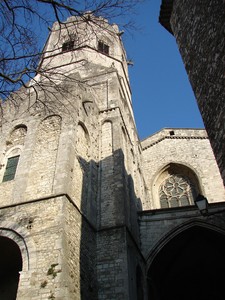 Viviers draws its name from the fish ponds (viviers in french) which fed to it near
Gallo-Roman city to Alba (Aps). It remains in the district of the
castle of the traces of a Roman presence. With V th century, transfer
of évêché in the Vivarium antique, oppidum of Helviens, after the
destruction of the capital, Alba . Excavations made it possible to
discover the remainders of an ancient place and a base of villa with
collonades.
Viviers draws its name from the fish ponds (viviers in french) which fed to it near
Gallo-Roman city to Alba (Aps). It remains in the district of the
castle of the traces of a Roman presence. With V th century, transfer
of évêché in the Vivarium antique, oppidum of Helviens, after the
destruction of the capital, Alba . Excavations made it possible to
discover the remainders of an ancient place and a base of villa with
collonades.
 The
bishop is lord of the city, and the economic and social life is
organized little by little around the presence of évêché: in the high
city is established the canonic district, while the civil dwellings are
staged on the slope and the low city.
The
bishop is lord of the city, and the economic and social life is
organized little by little around the presence of évêché: in the high
city is established the canonic district, while the civil dwellings are
staged on the slope and the low city.
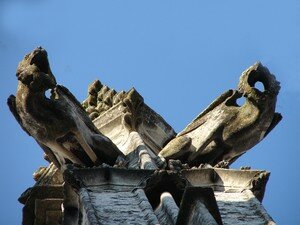 The
borough then became a powerful episcopal city with the privileges
confirmed by Lothaire and Charles the Bald person with the IXth
century.
The
borough then became a powerful episcopal city with the privileges
confirmed by Lothaire and Charles the Bald person with the IXth
century.
 The
bishop, true main of the country with the archbishop of Lyon, fought
for the independence of Vivarais until the annexation of Lyon per
Philippe the Beautiful one with the XIVth century.
The
bishop, true main of the country with the archbishop of Lyon, fought
for the independence of Vivarais until the annexation of Lyon per
Philippe the Beautiful one with the XIVth century.
The south of
the country, in Viviers, recognized then the suzerainty of king de
France and the bishops took, with the XVth century, the title of
counts of Viviers, princes of Donzère and of the Châteauneuf-of-Rhone. Viviers was attached to the Germanic Roman empire of 1032 to 1308.
The cathedral Vincent Saint
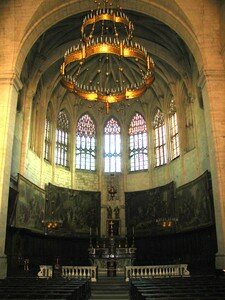 Between
the IIIth century and Vth century, the bishops settled in Viviers.
A first cathedral was built. shaven and rebuilt several times, with the
XIth century were built a beautiful roman building.
Between
the IIIth century and Vth century, the bishops settled in Viviers.
A first cathedral was built. shaven and rebuilt several times, with the
XIth century were built a beautiful roman building.
 The
high city consolidates its ramparts. One penetrates there by a
monumental door which is the tower today bell-tower of the cathedral.
The
high city consolidates its ramparts. One penetrates there by a
monumental door which is the tower today bell-tower of the cathedral.
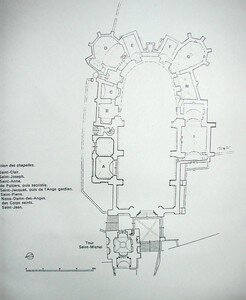 Saint-Vincent
presents a composite aspect today. It was built in Roman style
between the last third of the XIIth century and first half of the
next century. The bell-tower-porch and the nave, even if they underwent
many rehandlings, go back mainly to this time.
Saint-Vincent
presents a composite aspect today. It was built in Roman style
between the last third of the XIIth century and first half of the
next century. The bell-tower-porch and the nave, even if they underwent
many rehandlings, go back mainly to this time.
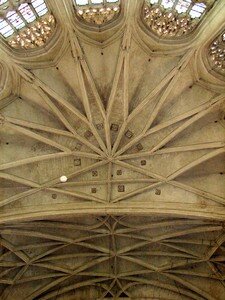 The
wars of religion damaged seriously with the Roman cathedral, which
until had been preserved there: the vaults broke down. The restorations
lasted until the XVIIIth century.
The
wars of religion damaged seriously with the Roman cathedral, which
until had been preserved there: the vaults broke down. The restorations
lasted until the XVIIIth century.
The Gothic chorus and its
radiating chapels, built by Charles de Tournon at the end of the XVth
century, were restored. This one appears disproportionate compared to
the nave, which preserved its proportions of origin; moreover, the
luxuriance of the decoration of the chorus contrasts with quasi the
absence of ornamentation in the nave.
 The
nave preserves important Roman architectural elements: outside, with
middle height of the side walls, one sees traces of resumption and
change of the apparatus. Each span comprises a bay in semicircular arch
walled. A trace of recovery to the top of bay of the western frontage
(XVIIth century) announces the site of the Roman roof.
The
nave preserves important Roman architectural elements: outside, with
middle height of the side walls, one sees traces of resumption and
change of the apparatus. Each span comprises a bay in semicircular arch
walled. A trace of recovery to the top of bay of the western frontage
(XVIIth century) announces the site of the Roman roof.
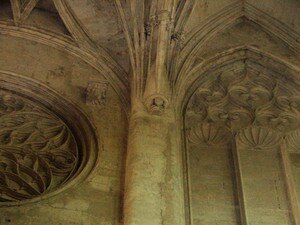 One finds inside the corresponding vestiges, which make it possible to restore a nave and the collateral ones of three spans.
One finds inside the corresponding vestiges, which make it possible to restore a nave and the collateral ones of three spans.
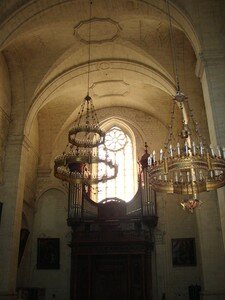 With
regard to the plan of the bedside, one can restore a déambulatoire and
4 radiating chapels rectangular, similar to those of Saint Philibert de
Tournus.
With
regard to the plan of the bedside, one can restore a déambulatoire and
4 radiating chapels rectangular, similar to those of Saint Philibert de
Tournus.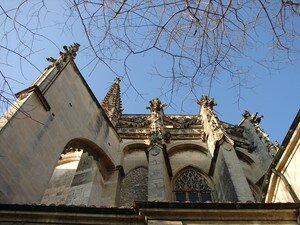
 An
open coursière occupies the high part of the chorus and connects
between them the 3 paring arcs and the 8 buttresses in a decorative
composition complexes where are mèlent openwork railings, pinnacles,
gâbles, pinnacles, waste-gas mains, garlands of stone and pendant. The
unit is decorated of a profusion of florets, hooks and reasons
vegetable.
An
open coursière occupies the high part of the chorus and connects
between them the 3 paring arcs and the 8 buttresses in a decorative
composition complexes where are mèlent openwork railings, pinnacles,
gâbles, pinnacles, waste-gas mains, garlands of stone and pendant. The
unit is decorated of a profusion of florets, hooks and reasons
vegetable.
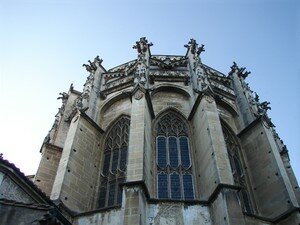 The
two side pinnacles have their 6 carved faces of fabulous or familiar
animals. On the northern pinnacle, two small monks sitted reading
constitute the only human representations of all the decoration
external of the chorus.
The
two side pinnacles have their 6 carved faces of fabulous or familiar
animals. On the northern pinnacle, two small monks sitted reading
constitute the only human representations of all the decoration
external of the chorus.
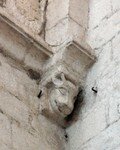 One
notices 11 pendant with decorations varied in the center of each side
of the apse and the re-employment of Gallo-Roman and Carolingian
fragments, with concise signs. In the south-western angle, a bull
recalls us that Mithra is not far.
One
notices 11 pendant with decorations varied in the center of each side
of the apse and the re-employment of Gallo-Roman and Carolingian
fragments, with concise signs. In the south-western angle, a bull
recalls us that Mithra is not far.
The Saint Michel's tower
 The
bell-tower of the cathedral, or Holy turn Michel, is high 40 m and
broad at its base of 9m. It was built in two parts: initially the
square, Roman base of the XIth century being used as baptistry,
then the high square tower to deny oneself at the end the XIVth
century.
The
bell-tower of the cathedral, or Holy turn Michel, is high 40 m and
broad at its base of 9m. It was built in two parts: initially the
square, Roman base of the XIth century being used as baptistry,
then the high square tower to deny oneself at the end the XIVth
century.
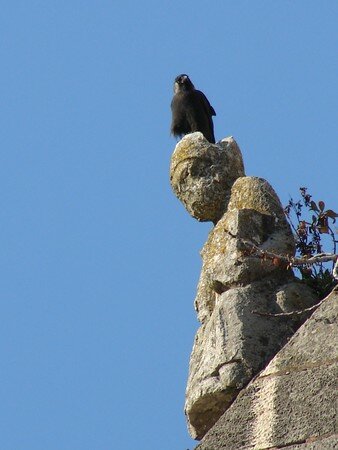 It is attached to the remainder of the building by a porch. The crenels of this one point out its primitive military vocation.
It is attached to the remainder of the building by a porch. The crenels of this one point out its primitive military vocation.
The bells are 4: Marie-Jeanette (1439 kg), Théodorine-Joséphine (760 kg), Arsene-Elisabeth (446 kg), Antoinette-Sophie (338 kg).
 Of far from the borough, posed on a hill, Saint Michel takes care.
Of far from the borough, posed on a hill, Saint Michel takes care.
http://www.mairie-viviers.fr/visiter/patrimoine_et_paysages/
www.monum.fr/visitez/decouvrir/fiche.dml?id=195&lang=fr

/https%3A%2F%2Fprofilepics.canalblog.com%2Fprofilepics%2F1%2F1%2F116167.jpg)
/https%3A%2F%2Fstorage.canalblog.com%2F49%2F16%2F312499%2F14620054_o.jpg)
/https%3A%2F%2Fstorage.canalblog.com%2F53%2F18%2F312499%2F14151229_o.jpg)
/https%3A%2F%2Fstorage.canalblog.com%2F07%2F05%2F312499%2F14149867_o.jpg)
/https%3A%2F%2Fstorage.canalblog.com%2F11%2F35%2F312499%2F14149307_o.jpg)
/https%3A%2F%2Fstorage.canalblog.com%2F90%2F14%2F312499%2F14125247_o.jpg)
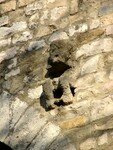
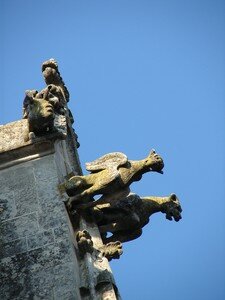


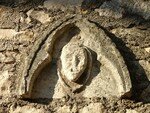
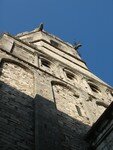
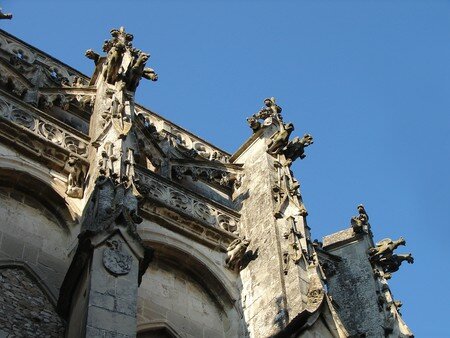


/https%3A%2F%2Fstorage.canalblog.com%2F12%2F98%2F137895%2F6624411_p.jpg)
/https%3A%2F%2Fstorage.canalblog.com%2F34%2F82%2F137895%2F27207854_p.jpg)
/https%3A%2F%2Fstorage.canalblog.com%2F32%2F37%2F137895%2F15872299_p.jpg)
/https%3A%2F%2Fstorage.canalblog.com%2F37%2F81%2F137895%2F15879822_p.jpg)